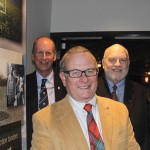A four-part documentary made for Prairie Public Television that spans the beginning of farming in Manitoba to present day and looks to what the future holds premiered in Winnipeg last week. “Built on Agriculture” is the culmination of more than three years’ work to produce a compelling and engaging television series telling a story of








